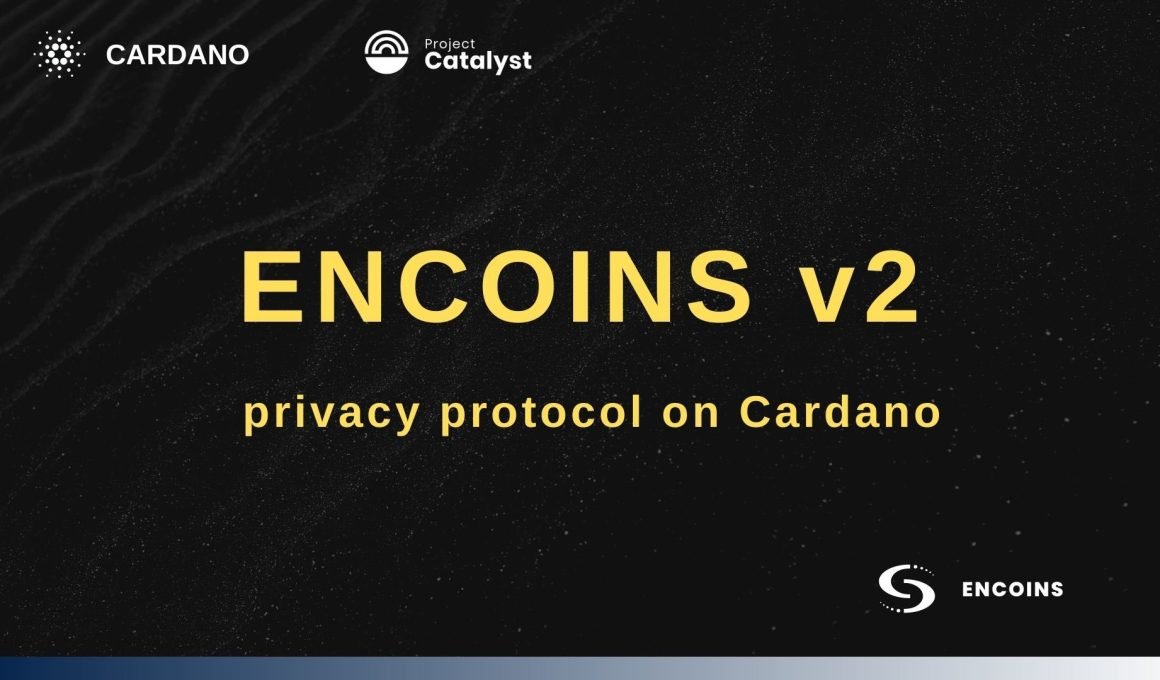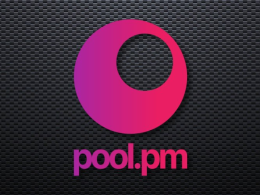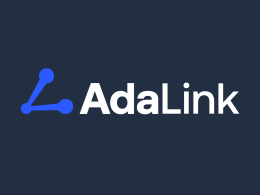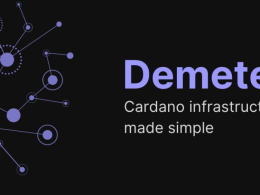Project Name: ENCOINS v2: privacy protocol on Cardano. DApp development and integrations.
Main Applicant: Vladimir Sinyakov
Email: [email protected]
Requested Funds: 234,000 ADA
Duration: 8 months
Website & Other Links:
TLDR
The project seeks to upgrade the ENCOINS protocol on the Cardano blockchain, aiming to bring a more streamlined and user-friendly privacy solution. Through this, users can create encrypted coins or NFTs with concealed redeeming values using Cardano’s zero-knowledge proofs. Present barriers like the complex user interface and lack of public APIs limit its adoption and collaborative efforts.
Traditionally, privacy solutions have remained cumbersome, inhibiting mainstream acceptance. ENCOINS v2 aims to break down these barriers, making privacy functionalities more intuitive, resembling regular wallet interfaces, and fostering greater integrations with Cardano DApps and services.
In alignment with Cardano’s principles of innovation and user-centricity, the project not only emphasizes enhanced privacy but also seeks to democratize access, ensuring a broader audience can benefit from such solutions. The proposal’s success in the Cardano ecosystem would promote its practical capabilities, appealing to both average users and potential partners.
The project’s success will be assessed based on tangible metrics like the number of transactions, total value locked in the protocol, quality and extent of collaborations, and valuable feedback from the community and ecosystem players.
Background on the Problem
In the evolution of the Cardano blockchain, and, indeed, the broader cryptocurrency space, privacy has become a forefront issue. With blockchain’s promise of transparency and decentralization, it has also inadvertently left traces that compromise user privacy in some cases. The Cardano community’s call for increased privacy, particularly when transacting and interacting with decentralized applications (DApps), has been steadily growing.
The Cardano ecosystem, with its smart contract capabilities and growing adoption, has seen an influx of various projects, especially DApps. However, the concern for privacy stands tall among them. Especially when dealing with NFTs (Non-Fungible Tokens), users and investors alike are looking for ways to mask or shield their activities from potential adversaries or merely to maintain confidentiality in their transactions.
This necessity for privacy has also expanded into the realm of financial inclusivity and support for marginalized communities. For instance, refugees and oppressed minorities often require secure and confidential payment solutions to ensure their safety and the safety of their funds. This highlights that the privacy concern on the blockchain is not just a matter of personal preference; it can be a matter of life and security for many.
Further complicating the problem is the overall user experience (UX) associated with such privacy solutions. Ideally, users should be able to interact with privacy tools without requiring an extensive technical background. But many existing DApps and protocols present complicated interfaces that can be daunting for the average user. Simplicity in UI/UX design, while maintaining robust privacy features, is thus essential for more widespread adoption.
Moreover, the essence of the decentralized blockchain space is collaboration. DApps and projects should be able to seamlessly integrate with each other to provide enriched services to users. The absence of open and accessible APIs (Application Programming Interfaces) often creates a bottleneck for such collaborative endeavors.
Lastly, the notion of decentralized governance and community participation is gaining traction. Projects that can integrate with Decentralized Autonomous Organizations (DAOs) not only ensure more democratic decision-making but also often gain trustworthiness in the eyes of the community.
The problem at hand, therefore, is multifaceted:
- The pressing need for privacy solutions on Cardano, especially concerning NFTs and confidential payments.
- The requirement of user-friendly interfaces to drive adoption of these privacy solutions.
- The necessity for open APIs to foster collaboration among projects and DApps.
- The integration with DAOs for decentralized governance.
ENCOINS v2, as conceptualized by Vladimir Sinyakov and his team, seeks to address these challenges by presenting a comprehensive privacy protocol for Cardano. With upgrades in its UI/UX, introduction of public APIs, support for a DAO, and the possibility of collaborations, it promises to usher in a new era of privacy-centered solutions for the Cardano community.
The Solution: ENCOINS v2
ENCOINS v2, as conceptualized by Vladimir Sinyakov’s team, is positioned as a cutting-edge privacy protocol tailored for the Cardano blockchain. The proposal encapsulates several key innovations and integrations, which are crafted in response to the identified problems. Here’s an in-depth look into the proposed solutions breakdown:
1. Redefined UI/UX Design: Simplicity is at the core of adoption. Recognizing the need for a more streamlined and intuitive interface, the team aims to redesign the DApp to resemble a wallet-like experience. This design will strategically conceal the underlying complexities, ensuring that even an average user can navigate and use the application without undue hassle. By making the protocol’s interaction feel familiar and straightforward, the hurdle of complicated UIs becomes a thing of the past.
2. Introducing Public APIs: For any robust ecosystem to flourish, interconnectivity between projects and applications is paramount. The ENCOINS team is all set to design, document, and deploy a set of public APIs, enabling other DApps, services, and potential partners on Cardano to programmatically access and integrate with the ENCOINS protocol. This approach not only amplifies potential collaborations but also paves the way for seamless integrations with existing Cardano wallets, thereby broadening the horizon of possibilities.
3. Agora-based DAO Integration: Decentralization isn’t just a technical facet; it’s also a governance model. ENCOINS v2 emphasizes this by planning to transition its treasury from a multi-signature script to an Agora-based DAO. By building a frontend for this Agora-based DAO, the team aspires to offer the community an interactive platform, pushing the governance model towards more inclusivity and democratic decision-making.
4. Leveraging Partnerships: Collaboration is the key to expanding the utility and reach of any project. The ENCOINS team acknowledges its current limitations in team size but sees this as an opportunity. With the proposed additional funding, the team aims to onboard smart contract and frontend developers with a sole focus on forging and realizing integrative collaborations. These partnerships, some of which are on the brink of announcement, promise to unlock practical use cases, further driving the adoption and utility of the ENCOINS protocol.
5. Pioneering Privacy with ENCOINS Ledger Mode: Taking the concept of privacy a notch higher, the protocol introduces the ENCOINS Ledger Mode. In this innovative mode, users have the flexibility to store their coins directly within the protocol. This means that confidential payments can be executed without the necessity of a traditional Cardano wallet. By integrating zero-knowledge proofs, users can generate NFTs (termed as encrypted coins or ‘encoins’) which possess secret redeemable values, thereby further enhancing transactional privacy.
6. Community Feedback as a Driving Force: Acknowledging and acting upon community feedback is vital for any project’s growth. ENCOINS has taken this to heart. The various proposed upgrades, especially the UI/UX improvements, have been largely influenced by community inputs, which the team holds in high regard.
Implementation Plan for ENCOINS v2
The successful execution of ENCOINS v2 is no small feat. The ambitious nature of the project demands a well-defined, step-by-step implementation plan. Below, we break down the strategy and methodology the team will employ to turn this vision into reality:
Structured Phased Development: The project will unfold across four major milestones, each building upon the previous one. This structured approach ensures that the project progresses in a logical and sustainable manner:
- Milestone 1: Initiate with the release of public APIs, catering to both the ENCOINS community and potential integrative partners.
- Milestone 2: Transition into the UI phase, incorporating the newly designed user-friendly interface and ensuring it’s mainnet-ready.
- Milestone 3: Shift the focus to DAO, finalizing the UI and undergoing rigorous testing for seamless community interactions.
- Milestone 4: Culminate by cementing collaborative partnerships, bringing practical use cases to the forefront.
Collaborative Team Dynamics: While the core team that masterminded ENCOINS v1 remains intact, the intention is to bolster this team with new hires. These strategic hires, particularly a smart contract/frontend developer, will channel their expertise exclusively towards integrations, ensuring that collaborative ventures are expedited and successfully implemented.
Agile Development Approach: By embracing an agile framework, the team will be able to quickly adapt to any unforeseen challenges, user feedback, or evolving market conditions. Regular sprints will be organized, leading to iterative releases that will be subjected to community feedback, ensuring continuous improvement.
Comprehensive Testing: Before any feature or milestone goes live, it will undergo rigorous testing, both internally by the team and externally with the aid of the Cardano community. This includes testing the API functionalities, stress-testing the new UI, and assessing the DAO interfaces. This ensures that the final product is robust and free from critical bugs.
Open Source & Community Engagement: The ENCOINS v2 project will remain fully open-sourced, inviting developers from across the globe to review, provide feedback, or even contribute directly to the codebase. This not only ensures transparency but also leverages collective intelligence to refine and enhance the protocol.
Resource Allocation and Management: With a detailed breakdown of expected hours for each segment of the project (APIs, UI/UX, DAO interface, collaborations), there’s a clear roadmap for resource deployment. This meticulous planning, combined with the funding acquired, will ensure that each aspect of the project receives the attention and manpower it deserves.
Community and Partner Feedback Loop: To maintain alignment with user needs and market demands, a continuous feedback mechanism will be established. Partners, collaborators, and the user community will be encouraged to provide insights, critiques, and suggestions, ensuring the DApp remains relevant and user-centric.
Documentation and Tutorials: To aid adoption and ease the learning curve, comprehensive documentation, guides, and tutorials will be developed. Whether it’s a developer looking to integrate with the ENCOINS API or a user trying to understand the nuances of the Ledger Mode, there will be resources available to guide them.
Team’s Capability to Deliver ENCOINS v2
The primary consideration when assessing a project’s likelihood of success is the capability and track record of the team behind it. In the case of ENCOINS v2, there’s a robust foundation of evidence to suggest that the team not only possesses the necessary skills but has a proven history of delivery.
Track Record: ENCOINS v1 stands as a testament to the team’s capability. A project that was brought to life under the same leadership, it serves as tangible evidence of their technical expertise, commitment to deadlines, and ability to navigate the complexities of blockchain development. Despite initial underestimations of timelines during their Fund6 participation, they over-delivered in terms of features and quality.
Technical Expertise: Led by Vladimir Sinyakov, a Ph.D. in applied math with five years of postdoc experience, the team’s foundation is built on solid academic and practical credentials. Their deep understanding of Haskell, a primary language for Cardano development, further bolsters their capability to deliver.
Collaborative Dynamics: The synergy between team members has already been proven in the development and launch of ENCOINS v1. With each member specializing in a unique domain, from backend development to frontend intricacies, there’s a harmonious blend of skills ensuring all facets of the project are covered.
Openness to Feedback: One of the team’s most commendable attributes is their responsiveness to community feedback. The decision to revamp the UI/UX in ENCOINS v2, for example, came from community suggestions, showcasing their adaptability and commitment to user satisfaction.
Commitment to Cardano: Their ongoing and exclusive engagement with the Cardano ecosystem highlights their dedication and familiarity with its nuances. This ensures that ENCOINS v2 will be tailored to leverage Cardano’s unique strengths and opportunities.
Future-Proofing: The team is not just focused on the present. Their plans to hire an additional developer dedicated to integrations reflect their forward-thinking approach, ensuring that ENCOINS remains relevant and grows in tandem with the evolving Cardano ecosystem.
Further Questions/Interview
I connected with Vlad and here is what he had to say
he ENCOINS protocol relies on Cardano Improvement Proposals (CIP-0381 and CIP-0038). How will the project adapt if these proposals undergo significant changes or delays?
The active development on CIP-0381 has been completed. There might be a delay by one more hardfork, in which case our v2 release may be delayed. However, we do not expect significant changes to this CIP. A delay may also allow us to include some additional features in the release.
The second CIP could be delayed, but it is not absolutely necessary for our protocol upgrade. We may choose to do the v2 transition without it.
What strategies do you have in place to promote the adoption of ENCOINS in the Cardano ecosystem?
Recently we have increased our activity in establishing new partnerships. We prefer meaningful collaborations where the benefits of using ENCOINS are apparent as it attracts users to our product. Besides that, we will work on improving the UI/UX of the DApp and adding mobile support.
Can you discuss more about your partnerships within the Cardano ecosystem? How are these partnerships beneficial to the project?
The partnerships demonstrate the utility of our protocol to the users who have not previously considered or were aware of it.
The partnership with Grabbit is a big one. Initially, they will be using ENCOINS for the unpredictability of the leaderboard rewards. But there may be more features in the future, such as private auction bids.
How are you planning to make peer-to-peer interactions easier and more streamlined in the new ENCOINS version?
The users will not have to send minting keys off-chain anymore (although it will still be possible). Instead, the keys will be sent in the encrypted format on-chain as well. The key reception will happen automatically.
In addition, there will be a simplified wallet-like UI with more intuitive buttons.
How will the introduction of native asset support impact the potential use cases of ENCOINS?
New use cases will become possible such as private DEXs and private NFT transactions.
Can you elaborate on how the planned upgrades will contribute to the Cardano developer ecosystem?
Our project is fully open-source. We have a functional multi-purpose backend component (called cardano-server) which is an alternative to PAB. Besides, we have a library of helpful functions (plutus-apps-extra) that are useful for Cardano DApp backend developers.
The grant will allow us the continuous development of these components, make better documentation and tutorials, and ensure that they remain useful for the ecosystem developers.
What are some of the challenges you anticipate during the development of ENCOINS v2, and how do you plan to overcome them?
With the experience we gained during the development of v1, we think our development timeline is reasonable. Besides potential delays with CIPs that might affect our release schedule, we expect to follow this timeline.
The most difficult part of the development is to finalize and verify the correctness of the new on-chain code as well as the off-chain protocol for collaborative transactions. Collaborative transactions is a new feature that is similar to Monero’s decoys or Bitcoin’s CoinJoin tools.
How do you see the role of ENCOINS evolving in the wider DeFi space, given the proposed new features and enhancements in v2?
I see Cardano DeFi space evolve in the direction of more composability. As of today, the composability of different protocols is limited. In the future, I think we will see the implementation of certain on-chain script patterns that will allow every DeFi protocol to work with each other. ENCOINS will be no exception. The idea is that every DeFi protocol may have an additional privacy feature added that allows users to not disclose their trades, participation in lending/borrowing, etc.
Do you anticipate any legal or regulatory challenges in the development or deployment of your project?
Our project positions itself as an alternative to private transaction platforms such as Railgun on Ethereum, Monero, and ZCash. Some of these face some restrictions, such as not being able to list tokens on certain centralized exchanges. Such platforms may also be banned in certain countries. With the implementation of v2, our project will be fully decentralized, so we do not expect challenges faced by more centralized privacy projects.
How do you plan to ensure the sustainability of the project after the funding period has ended?
ENCS token value is tied to the expected relayers’ fees. We expect that the fees received by the treasury and the tokens that are already there will be enough to sustain the project in the long term.
Are there any collaborations with other DApps or services within the Cardano ecosystem during or after the project?
Currently, we have announced collaborations with Grabbit and AdaHandle. More collaborations are in the works.
What are your plans for future development or expansion of the project after its completion?
With the completion of these two Project Catalyst proposals, we will set the project on the path of self-sustainability. We plan to seek more collaborations inside the Cardano ecosystem as well as explore bridges to other ecosystems. Additionally, with big upgrades to Cardano relevant to our protocol, we plan to upgrade it accordingly.










